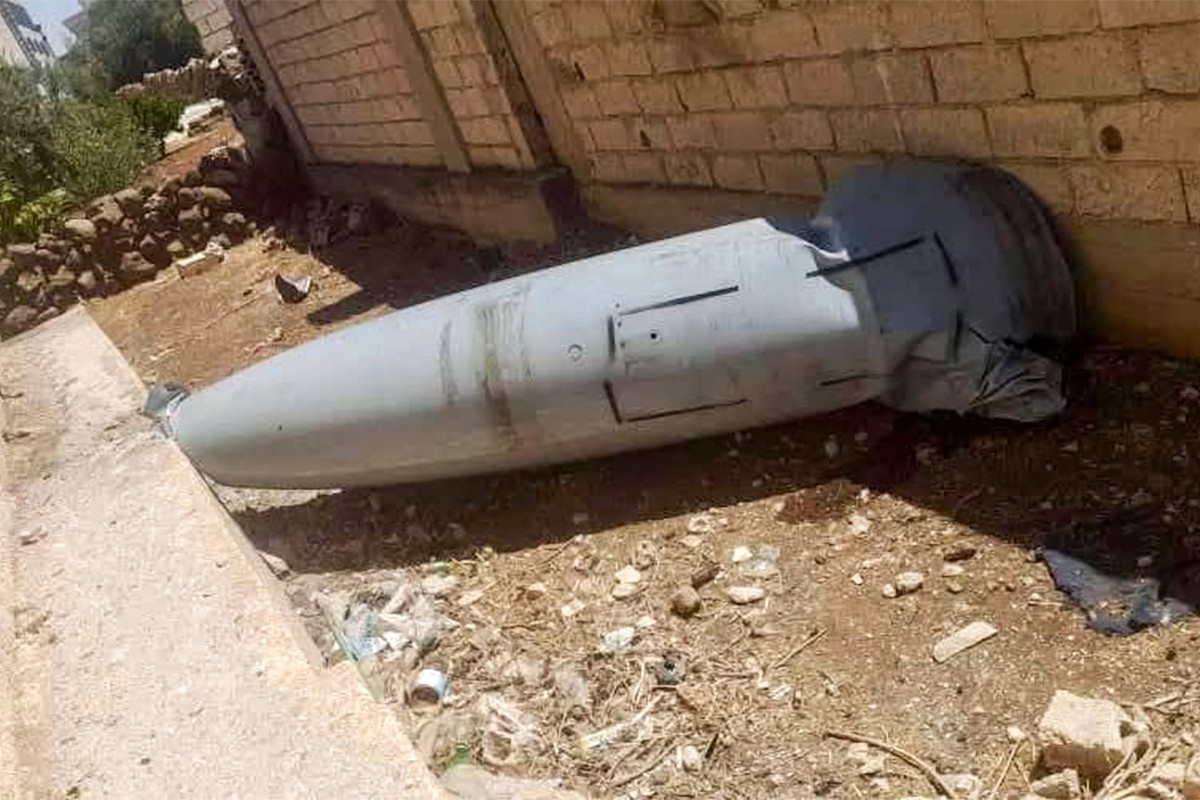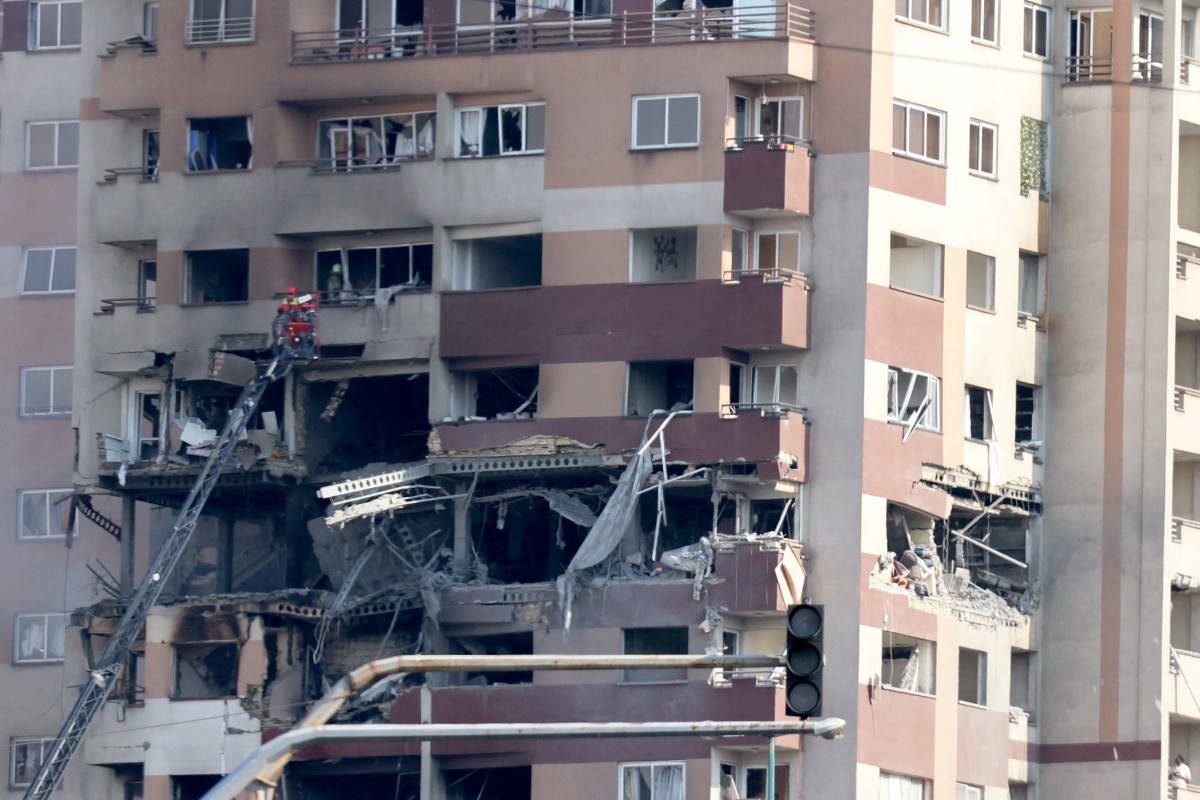
By Agence France-Presse
Israel unleashed a wave of strikes on Iran Friday, hitting about 100 targets including nuclear facilities and military command centers, and killing senior figures, among them the armed forces chief and top nuclear scientists.
Iran’s supreme leader Ayatollah Ali Khamenei warned Israel it faced a “bitter and painful” fate over the attacks, while the Iranian military said there were “no limits” to its response.
The Israeli military said later Iran launched around 100 drones in retaliation, with air defenses intercepting them outside Israeli territory.
Neighboring Jordan said it intercepted drones and missiles that violated its airspace, as air raid sirens sounded in Amman.
US President Donald Trump told Fox News he had prior knowledge of the Israeli strikes, which Israel said involved 200 fighter jets. Trump also stressed that Tehran “cannot have a nuclear bomb.”
The United States underlined that it was not involved in the Israeli action and warned Iran not to attack its personnel or interests.
But Tehran said Washington would be “responsible for consequences” as Israel’s operation “cannot have been carried out without the coordination and permission of the United States.”
Prime Minister Benjamin Netanyahu said Israel struck at the “heart of Iran’s nuclear enrichment programme,” taking aim at the atomic facility in Natanz and nuclear scientists.
The strikes would “continue as many days as it takes”, the Israeli leader said, while the military said intelligence showed Iran was approaching the “point of no return” on its nuclear programme.
The strikes killed Iran’s highest-ranking military officer, armed forces chief of staff Mohammad Bagheri, and the head of the powerful Islamic Revolutionary Guard Corps, Hossein Salami, Iranian media reported.
“The precise targeting of senior commanders of the Revolutionary Guards, the Iranian military, and nuclear scientists—all of whom were involved in advancing the plan to destroy Israel—sends a strong and clear message: those who work toward Israel’s destruction will be eliminated,” Israel’s Defence Minister Israel Katz said.
AFP images showed a gaping hole in the side of a Tehran high-rise residential building that appeared to have sustained a targeted and localised strike.
State media said civilians, including women and children, were killed. Tasnim news agency said six nuclear scientists were killed.

Flights suspended
Tehran’s streets were deserted except for queues at petrol stations, a familiar sight in times of crisis.
Air traffic was halted at Tehran’s main gateway, Imam Khomeini International Airport, while Iraq and Jordan also closed their airspace and suspended flights.
Gulf airlines cancelled flights to and from Iran, as well as Iraq, Jordan, Lebanon and Syria.
Israel declared a state of emergency and closed its airspace, with Defence Minister Israel Katz saying Israel was braced for Iran’s expected retaliation.
Hours later, the Jordanian military said its aircraft and air defence systems intercepted “a number of missiles and drones that entered Jordanian airspace.”
There are “no limits in responding to this crime,” Iran’s armed forces said, accusing Israel of crossing “all red lines”.
Oil prices surged while stocks sank on the Israeli strikes, which came after Trump’s warning of a “massive conflict” in the region.
Trump had also said the United States was drawing down staff in the Middle East, after Iran had threatened to target US military bases in the region if conflict breaks out.
Prior to the strikes, Trump said he believed a deal on Iran’s nuclear programme was “fairly close”, cautioning however that an Israeli attack on its arch foe could wreck the chances of an agreement.
The US leader did not disclose the details of a conversation on Monday with Netanyahu, but said: “I don’t want them going in, because I think it would blow it.”
Trump quickly added: “Might help it actually, but it also could blow it.”
‘Within reach’
US Secretary of State Marco Rubio warned Iran not to respond to Israeli strikes by hitting US bases, saying Washington was not involved.
Ahead of Friday’s attack, Iran had threatened to hit US bases in the Middle East if conflict were to erupt.
With the violence raising questions on whether a sixth round of talks planned between the US and Iran will still take place on Sunday in Oman, Trump said Washington is still “hoping to get back to the negotiating table”.
Confirming Natanz among targets, the UN’s nuclear watchdog said it was “closely monitoring” the situation.
“The agency is in contact with Iranian authorities regarding radiation levels. We are also in contact with our inspectors in the country,” said Rafael Grossi, head of the International Atomic Energy Agency (IAEA).
‘Extremist’
Israel, which counts on US military and diplomatic support, sees Iran as an existential threat.
Netanyahu has vowed less restraint since the unprecedented Oct. 7, 2023 attack on Israel by Tehran-backed Hamas, which triggered the massive Israeli offensive in Gaza.
Since the Hamas attack, Iran and Israel have traded direct attacks for the first time.
Aside from Hamas, Israel is also battling Iranian proxies Hezbollah in Lebanon and the Houthis in Yemen.
The United States and other Western countries, along with Israel, have repeatedly accused Iran of seeking a nuclear weapon, which it has repeatedly denied.
Israel again called for global action after the IAEA accused Iran on Wednesday of non-compliance with its obligations.
Iran’s nuclear chief, Mohammad Eslami, slammed the resolution as “extremist”, while Tehran said it would launch a new enrichment centre in a secure location.
Iran currently enriches uranium to 60%, far above the 3.67% limit set in the 2015 deal and close, though still short, of the 90% needed for a nuclear warhead.
